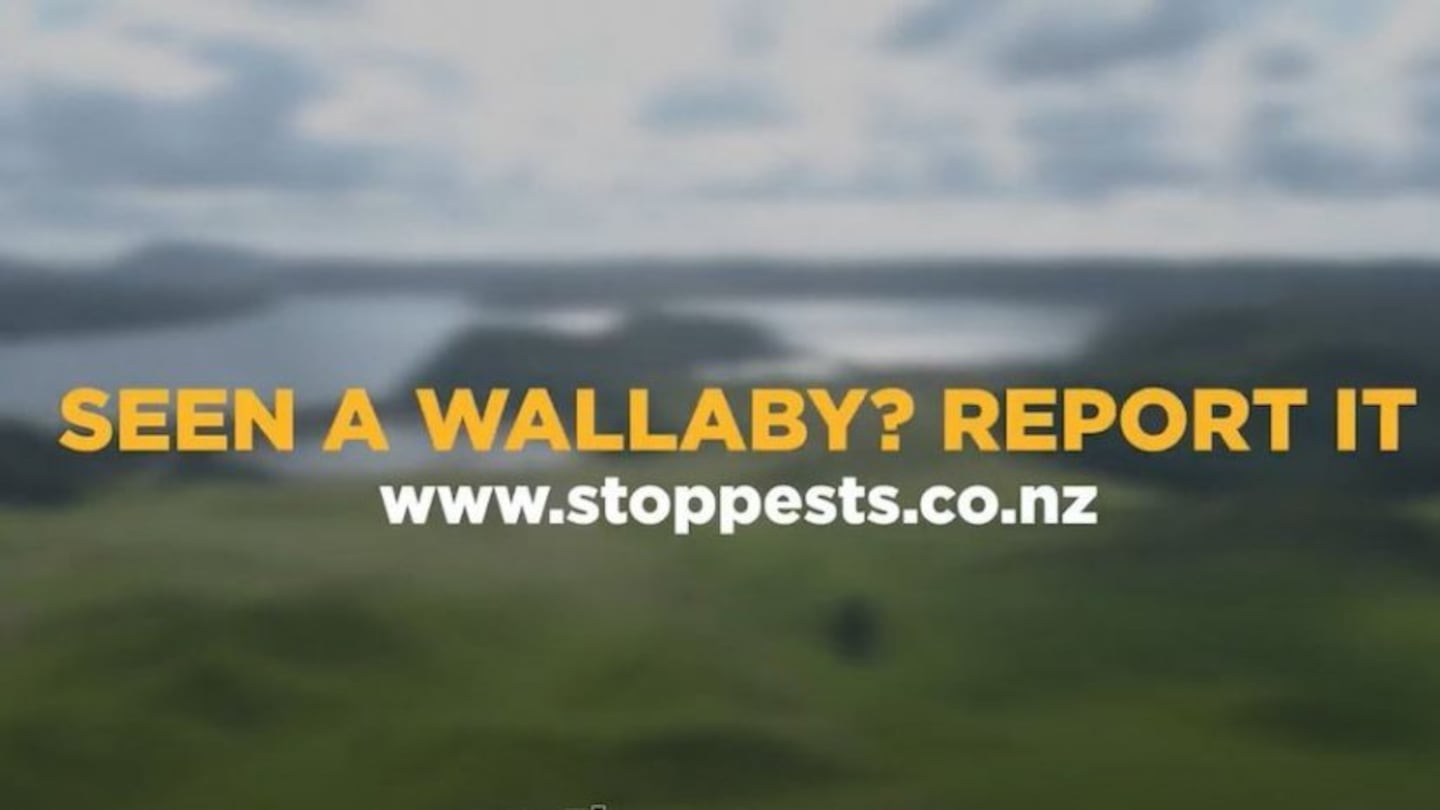Video / Ken Raureti (Ngāti Rangitihi) on the wallaby problem Source / Bay of Plenty Regional Council
By Eva Wilson, Te Rito Journalism cadet.
Manatū Ahu Atua, the Ministry of Primary Industries, is launching the Tipu Mātoro: Wallaby-free Aotearoa campaign this summer in which it pledges to work with local iwi, councils, farmers and landowners to manage and reduce populations, and raise awareness of the harm caused by invasive wallaby populations.
The campaign asks the public to be on the lookout for wallabies across Aotearoa, focusing first on stopping the spread of wallabies from known areas in the Bay of Plenty/Waikato and in South Canterbury/North Otago.
The population, which was first introduced in the 1870s, is increasing. Waikato Regional Council says the wallaby's impact on the environment has a “similar effect to possums”.
Two introduced species, in particular, are causing millions in damage each year - the dama wallaby in Rotorua in the Bay of Plenty, and the Bennett’s wallaby in Canterbury and North Otago.
“Wallabies silently prey on the futures of our forests and farms,” says John Walsh, Biosecurity New Zealand’s director of response.
“By targeting populations outside these containment zones and following up on reported wallaby sightings, the programme can prevent new populations establishing elsewhere in Aotearoa.”
‘Barren wastelands’
Wallabies have no natural predators in Aotearoa, unlike in their homelands of Australia and Papua New Guinea, where they are prey for various predators, including dingos and Tasmanian Devils.
Although Wallabies are herbivores, their occupation of grass and bush areas affects native birds and lizards. They feast on grass, seedlings and shrubs, which consequently degrades natural bush areas that are home to native species.
“What were once lush forest understories turn into barren wastelands, meaning that in the coming years our native bush won’t regenerate.”
“If left unchecked, by 2025 wallabies would cost New Zealanders $84 million a year in damage and over the next 50 years, they could spread through a third of the country,” Mr Walsh says.
Wallabies are similar in appearance to kangaroos but they are much smaller. North Island Dama wallabies stand at about 50cm, while South Island Bennett’s wallabies stand at about 80cm.
“Population estimates set wallabies at more than one million but, as they are nocturnal and excellent at hiding, public reports are one of the best ways we can manage the spread.”
"If you spot a wallaby, please do your bit and report it at www.reportwallabies.nz."




